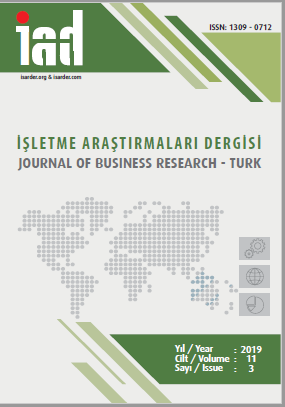ARCH ve GARCH Modelleriyle Standard & Poors 500 Endeksinde Rassal Yürüyüş ve Piyasa Etkinliğinin Analizi
Analysis of Random Walk and Market Efficiency in Standard & Poors 500 Index Using ARCH and GARCH Models
Author(s): Nurgün KOMŞUOĞLU YILMAZSubject(s): Methodology and research technology, Financial Markets
Published by: İşletme Araştırmaları Dergisi
Keywords: Efficient Market Hypothesis; Random Walk Hypothesis; S&P 500 Index;
Summary/Abstract: Purpose - The aim of this study is to test the Efficient Market Hypothesis and to show its validity in Standard & Poors 500 index. Design/Methodology/Approach - Dickey-Fuller Unit Root Test, Phillips Perron Test and ARMA Test and ARCH and GARCH Model were used in this study. Findings - As a result of the study, assumptions of both random walk hypothesis and Efficient Market Hypothesis are rejected. Discussion - The efficient market hypothesis was tested by taking into consideration the series of daily yield data date between 31-12-2009 and 31-12-2018 of the shares of the S & P 500 index. The Efficient Market Hypothesis argues that an investor's return on its financial asset is not dealing with whether this investor is an active or passive investor.
Journal: İşletme Araştırmaları Dergisi
- Issue Year: 11/2019
- Issue No: 3
- Page Range: 1559-1574
- Page Count: 16
- Language: Turkish

